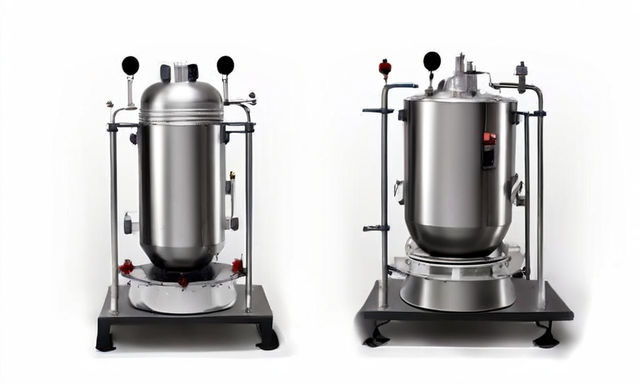What is Vacuum Impregnation? A Complete Guide from Principles, Benefits, Processing Types to Vacuum Pump Selection
I. Basic Principles and Benefits
Vacuum Impregnation is a sealing technique used to eliminate porosity in metal castings and powder metallurgy parts to prevent leakage and enhance part performance. This technique is commonly applied in industries such as automotive, aerospace, electronics, and medical. The basic principle of vacuum impregnation involves the use of vacuum and pressure to allow liquid sealant to penetrate into the pores of the part, forming a sealing effect after curing. Its main benefits include:

II. Processing Types of Vacuum Impregnation
There are several processing types of vacuum impregnation, mainly including Dry Vacuum and Pressure (DVP), Dry Vacuum (DV), and Wet Vacuum (WV). 1. Dry Vacuum and Pressure (DVP) Steps: 1. Place the part in the dry impregnation chamber and apply vacuum until the desired vacuum level is reached. 2. While maintaining the vacuum, open the transfer valve and introduce the degassed sealant. 3. Release the vacuum, apply overpressure to allow the sealant to penetrate into the pores. 4. Return the sealant to the storage tank, remove the part for cleaning and curing. Application: Suitable for parts with high sealing requirements and complex designs, such as components in automotive, aerospace, and defense industries. 2. Dry Vacuum (DV) Steps: 1. Place the part in the dry impregnation chamber, apply vacuum to remove all air. 2. While maintaining the vacuum, introduce the sealant, then release the vacuum to allow the sealant to penetrate the pores under atmospheric pressure. 3. Return the sealant to the storage tank, remove the part for cleaning and curing. Application: Suitable for situations with lower penetration requirements and longer cycle times. 3. Wet Vacuum (WV) Steps: 1. The sealant is stored in a container, and the part is placed in the wet impregnation chamber. Apply vacuum to remove air from the container and the sealant. 2. Release the vacuum, allowing the part to soak in the sealant under atmospheric pressure, then remove it after penetration. Application: Suitable for sealing larger pores and leak paths, commonly used in powder metal parts and electrical components.III. How to Choose the Right Type of Vacuum Pump
Choosing the appropriate vacuum pump is crucial for the effectiveness of vacuum impregnation. Here are some factors to consider: 1. Vacuum level requirements: Different vacuum impregnation types require different vacuum levels. 2. Processing capacity and cycle time: Select pump exhaust speed and vacuum level based on production scale and cycle time. Automated systems typically require pumps with higher vacuum levels and exhaust speeds. 3. Sealant compatibility: Ensure that the pump material is compatible with the sealant used to prevent corrosion of the pump body or contamination.IV. Conclusion
Vacuum impregnation is an important technology that significantly improves the quality and lifespan of metal parts. Understanding different vacuum impregnation processes and their applicable ranges, and selecting the appropriate vacuum pump, is crucial for achieving efficient and high-quality production. I hope the above information is helpful to you. Thank you very much for visiting.

